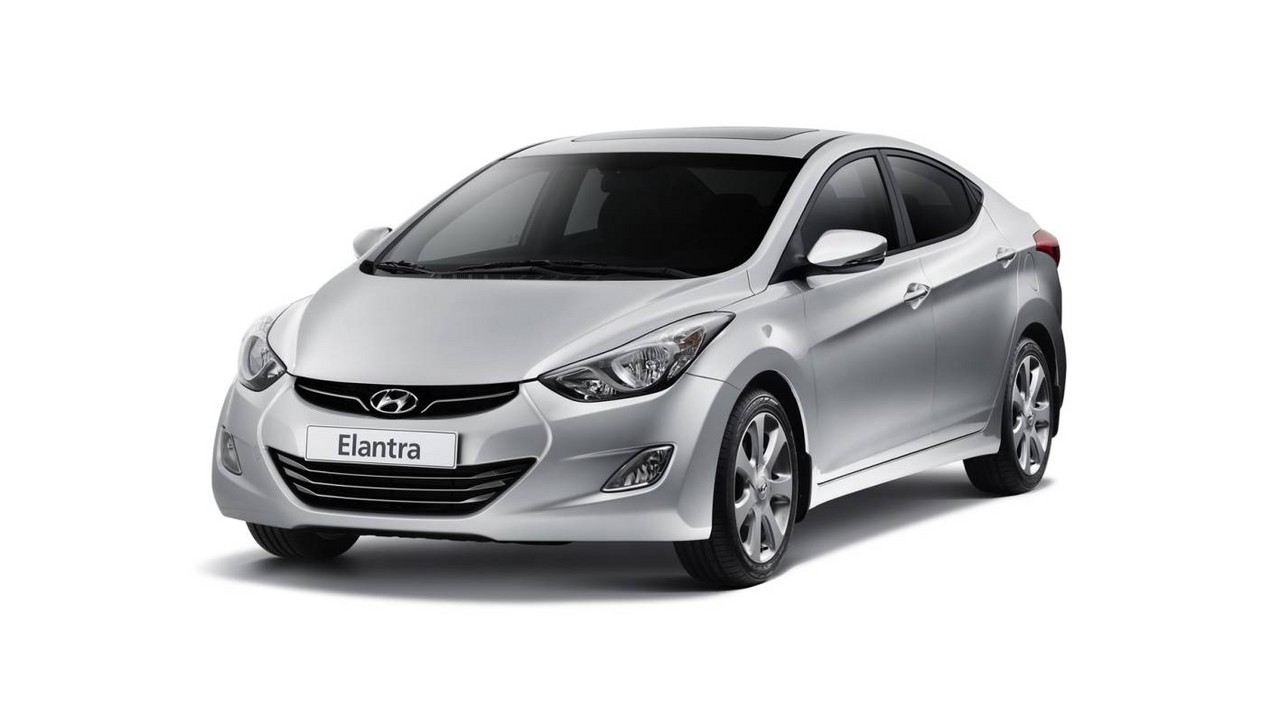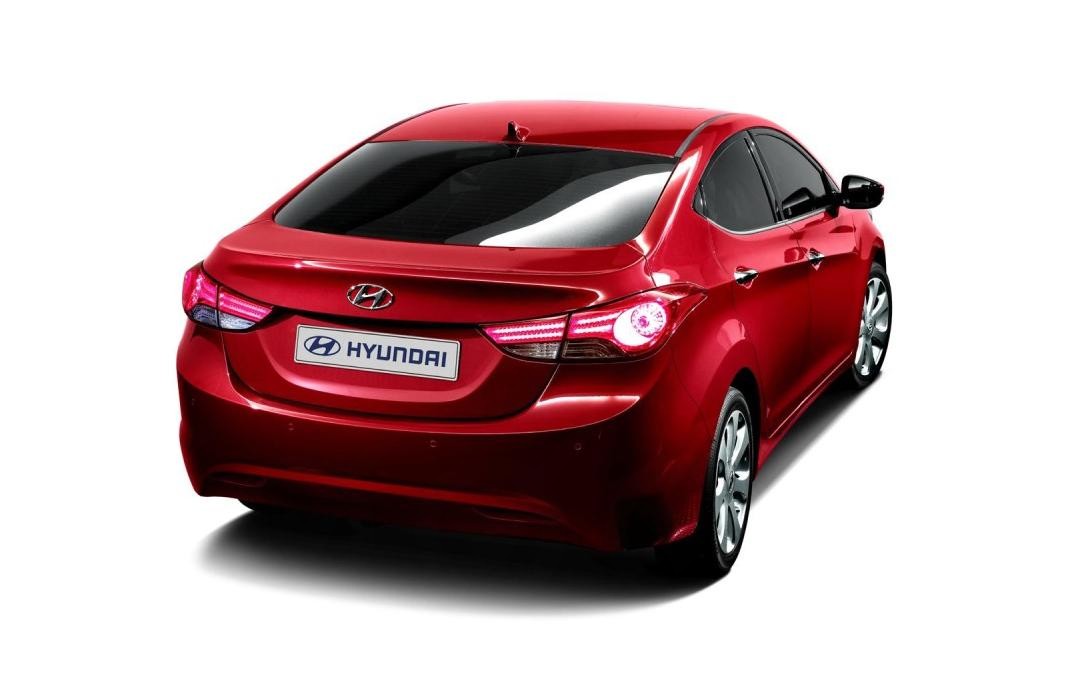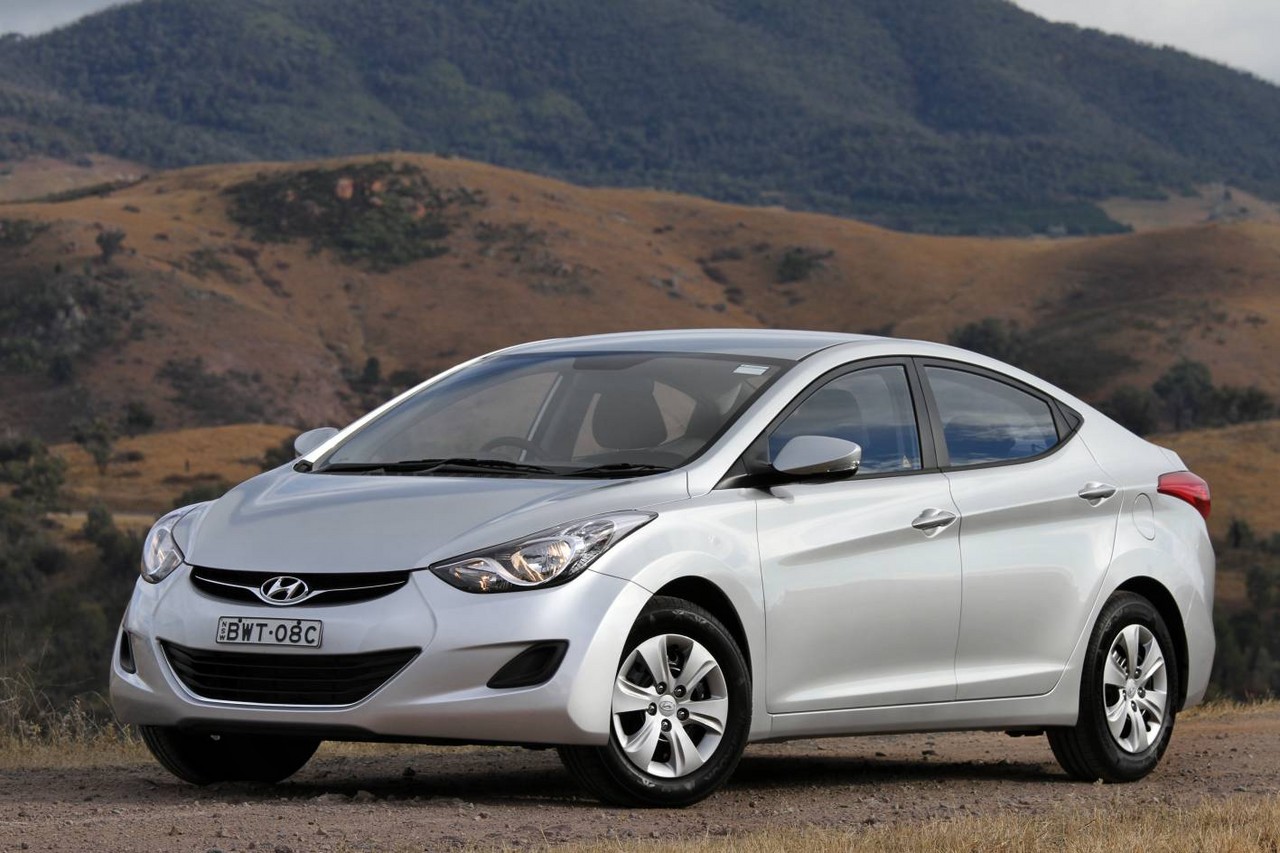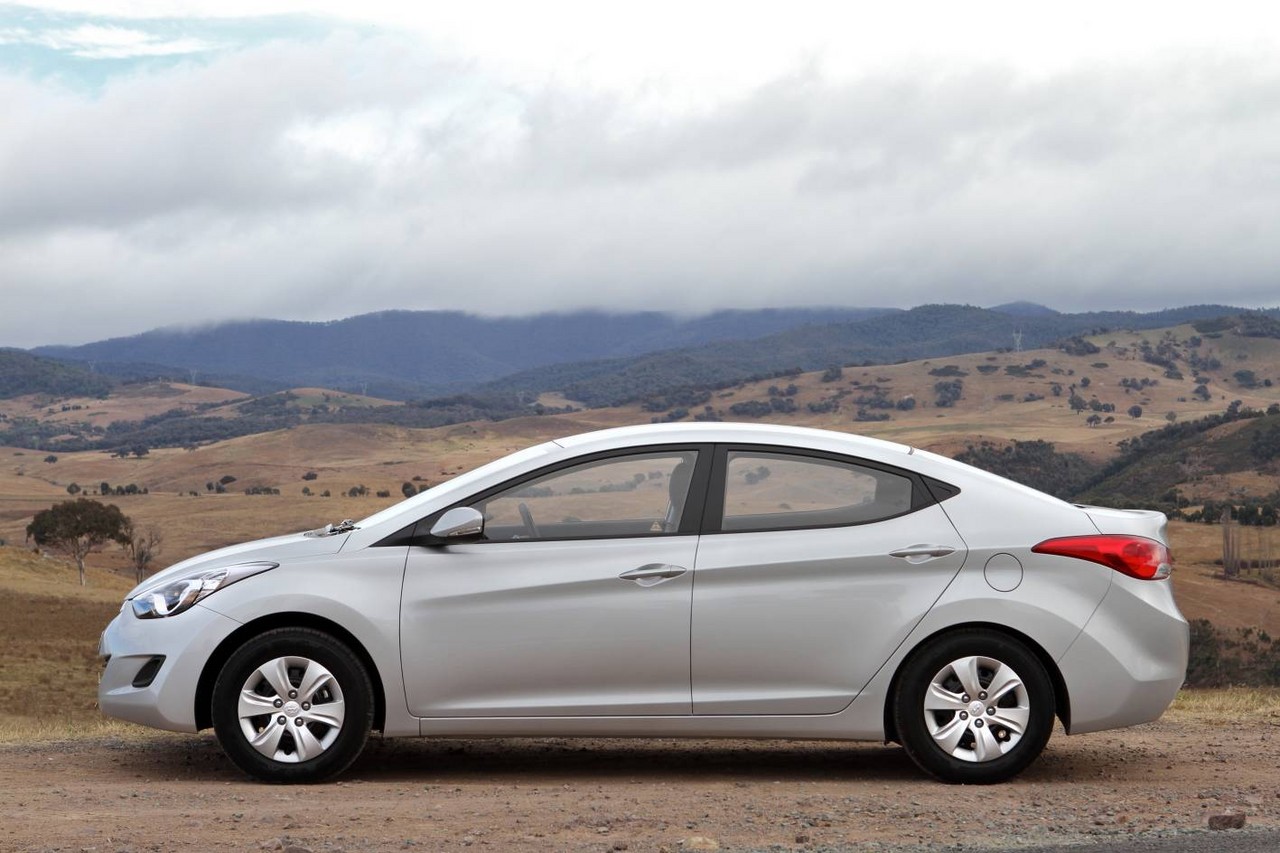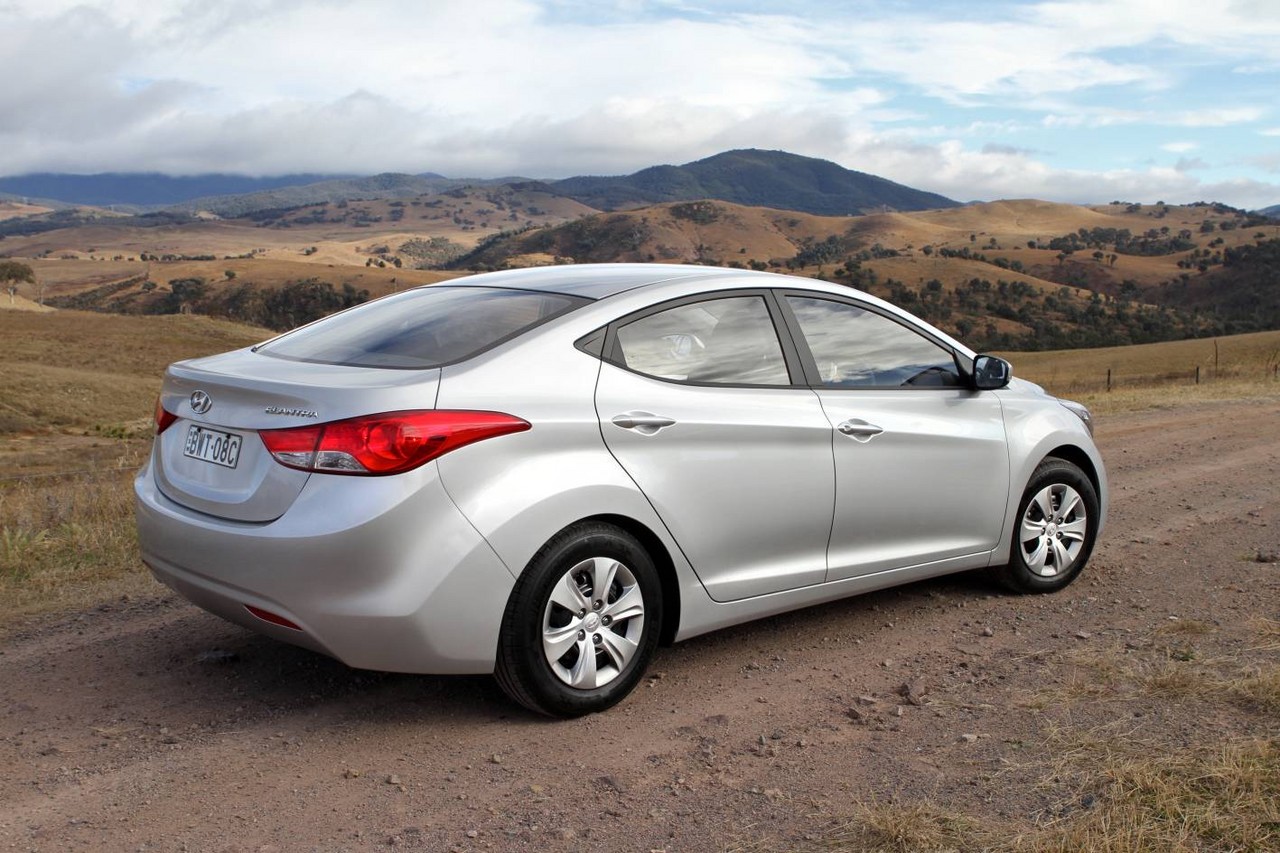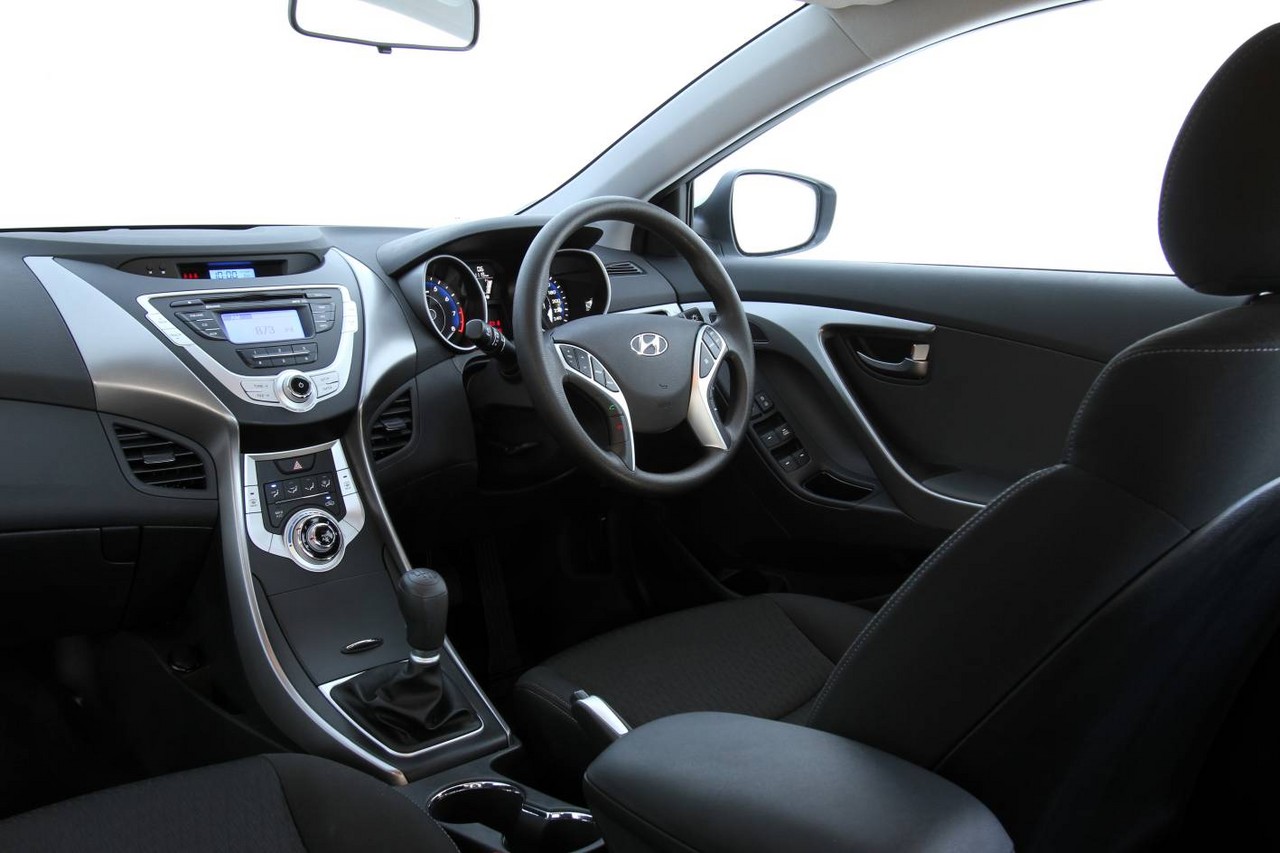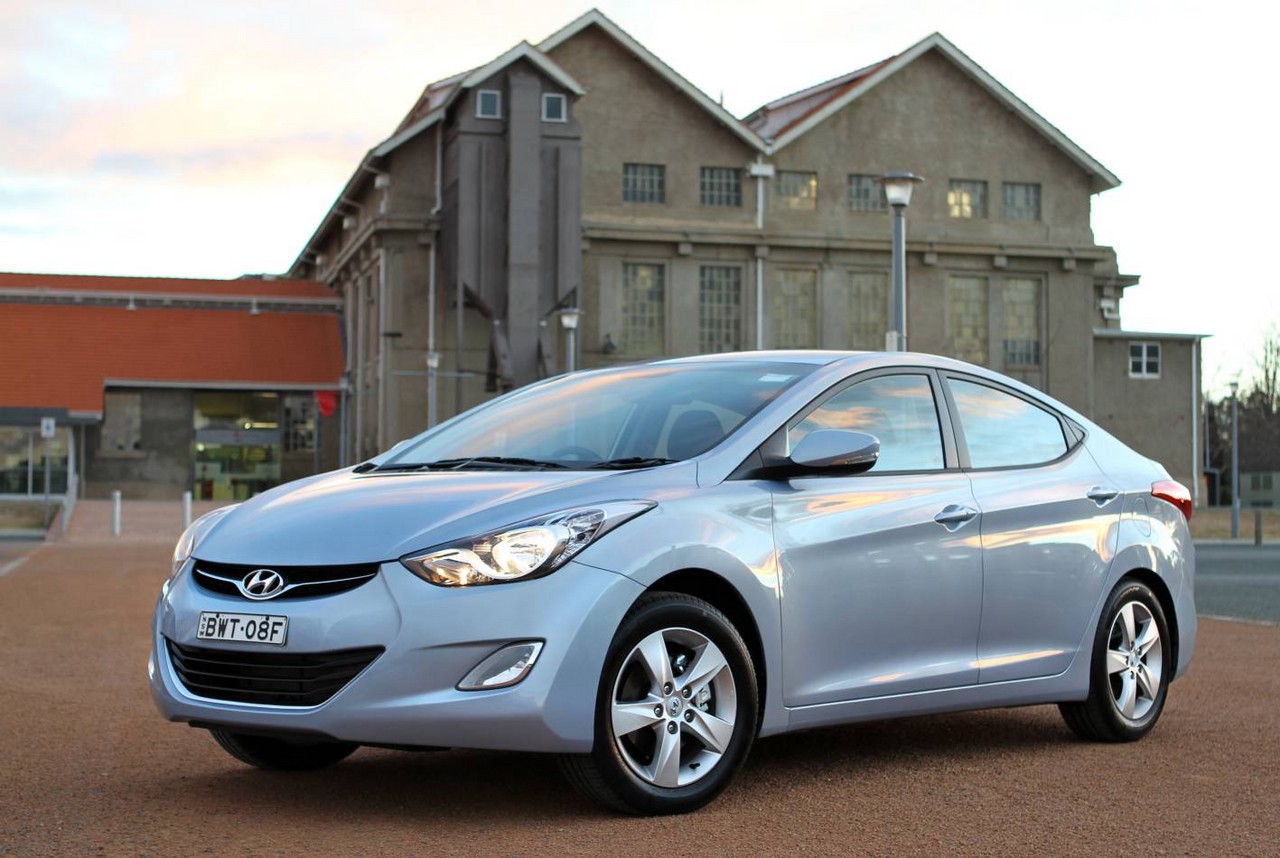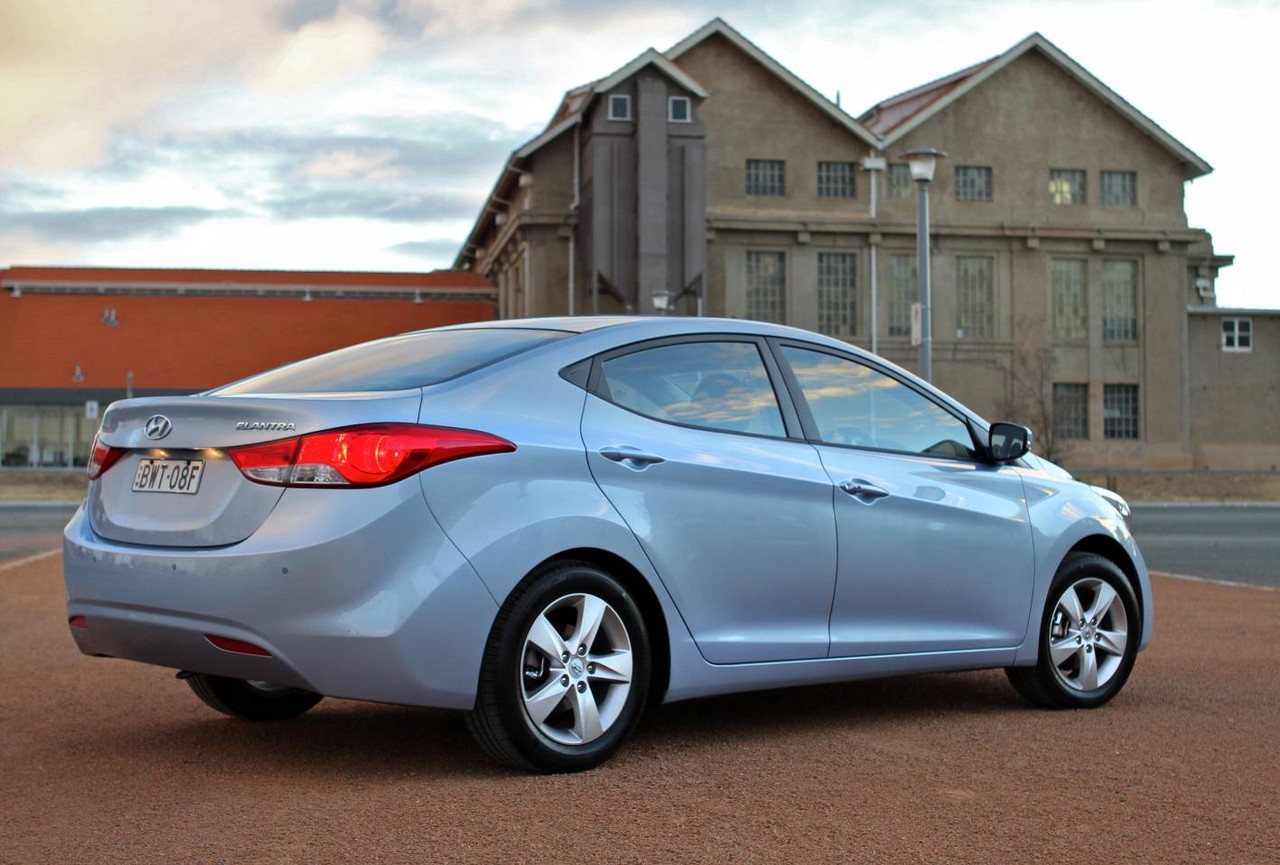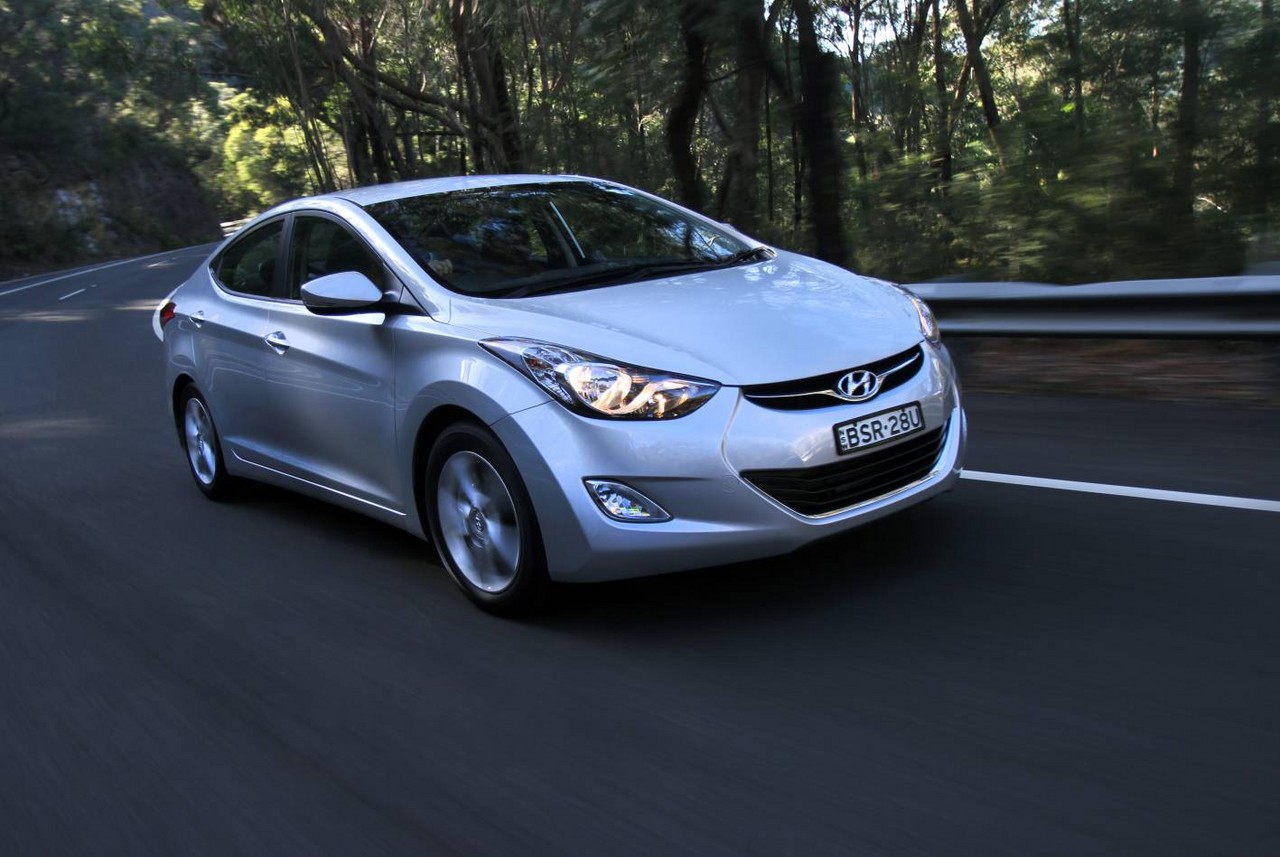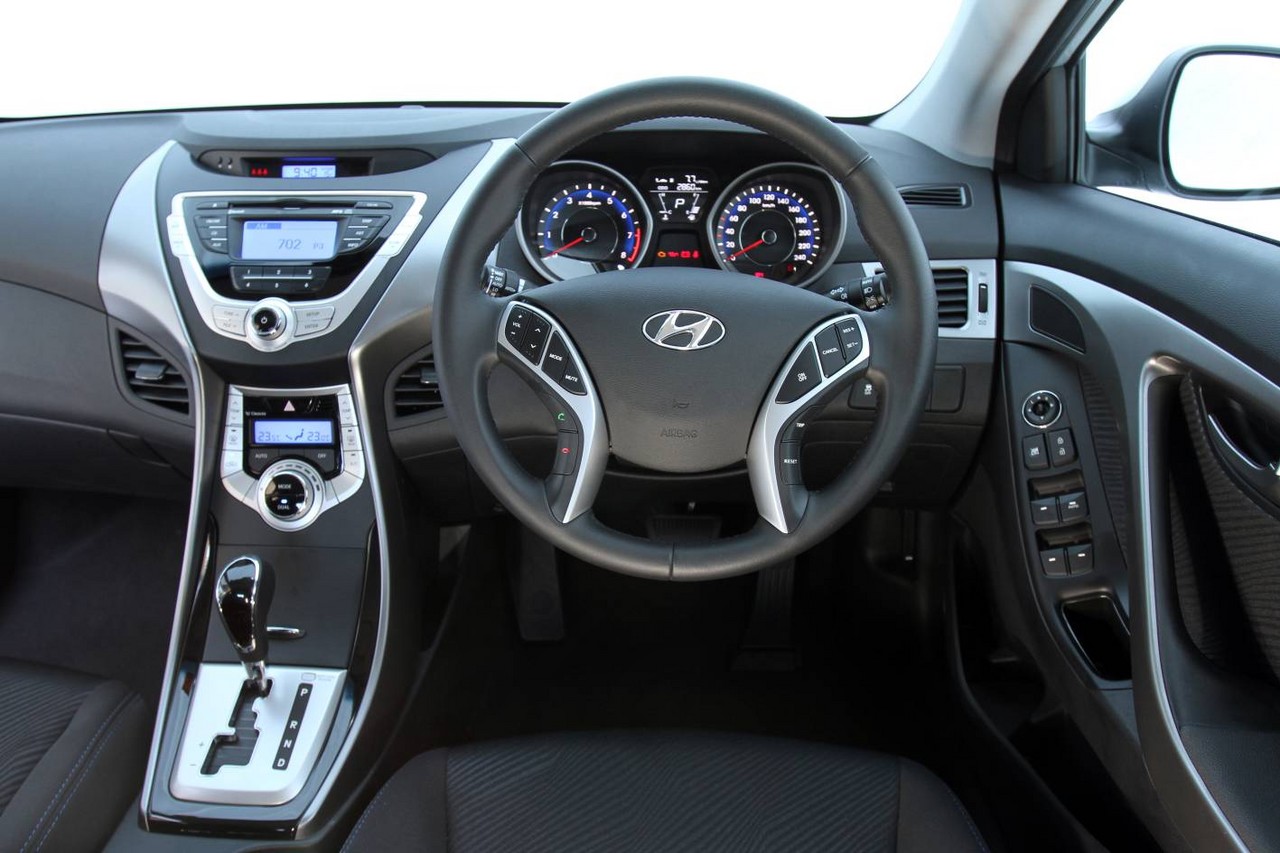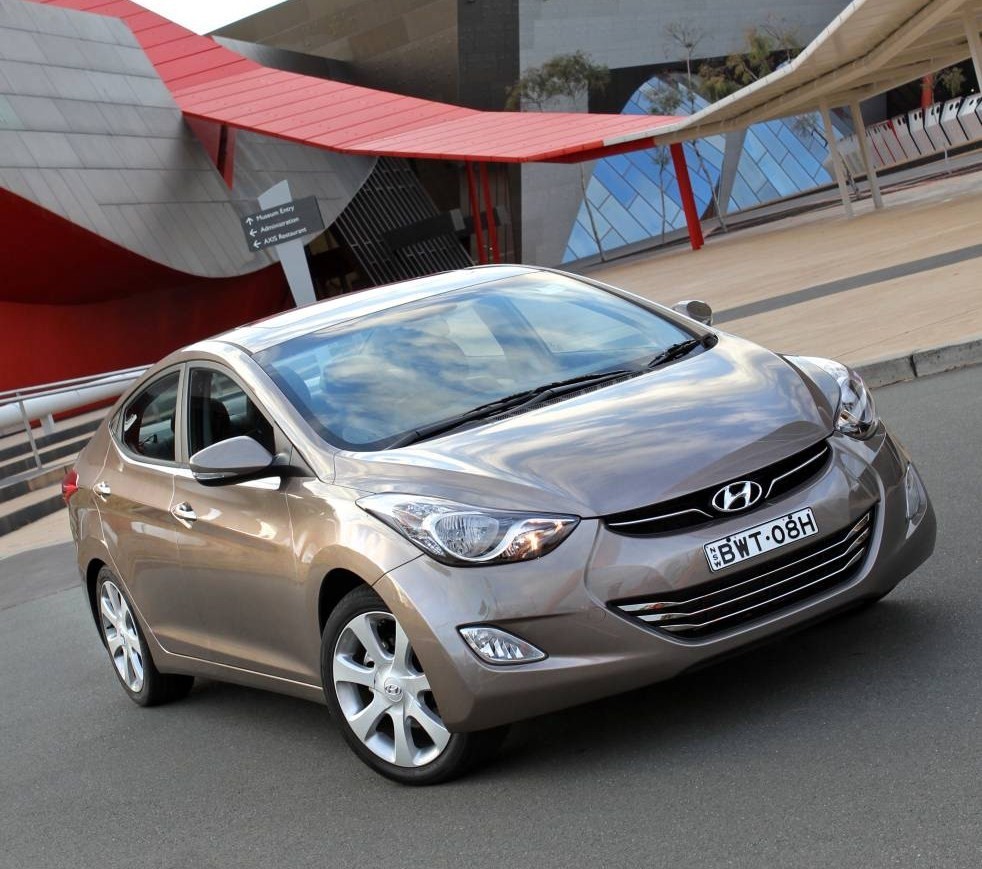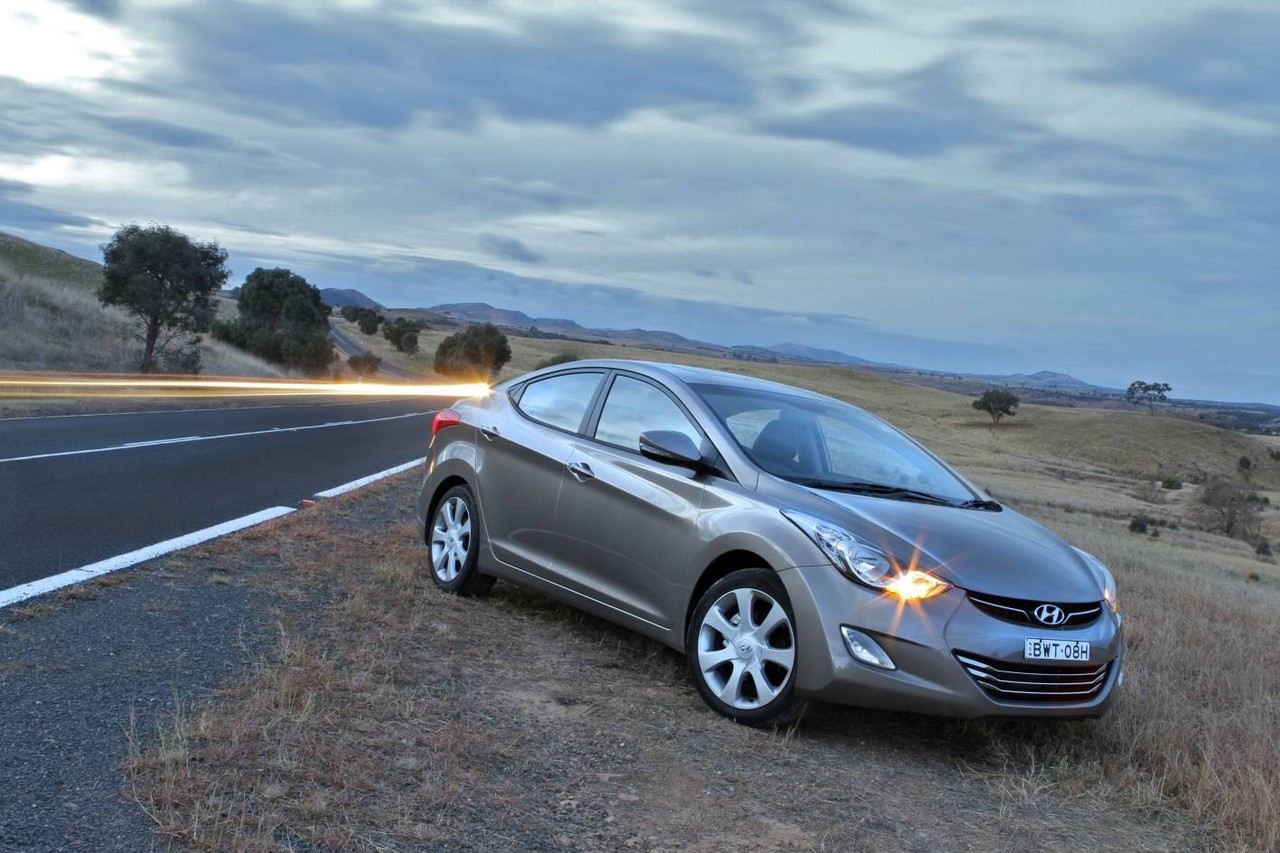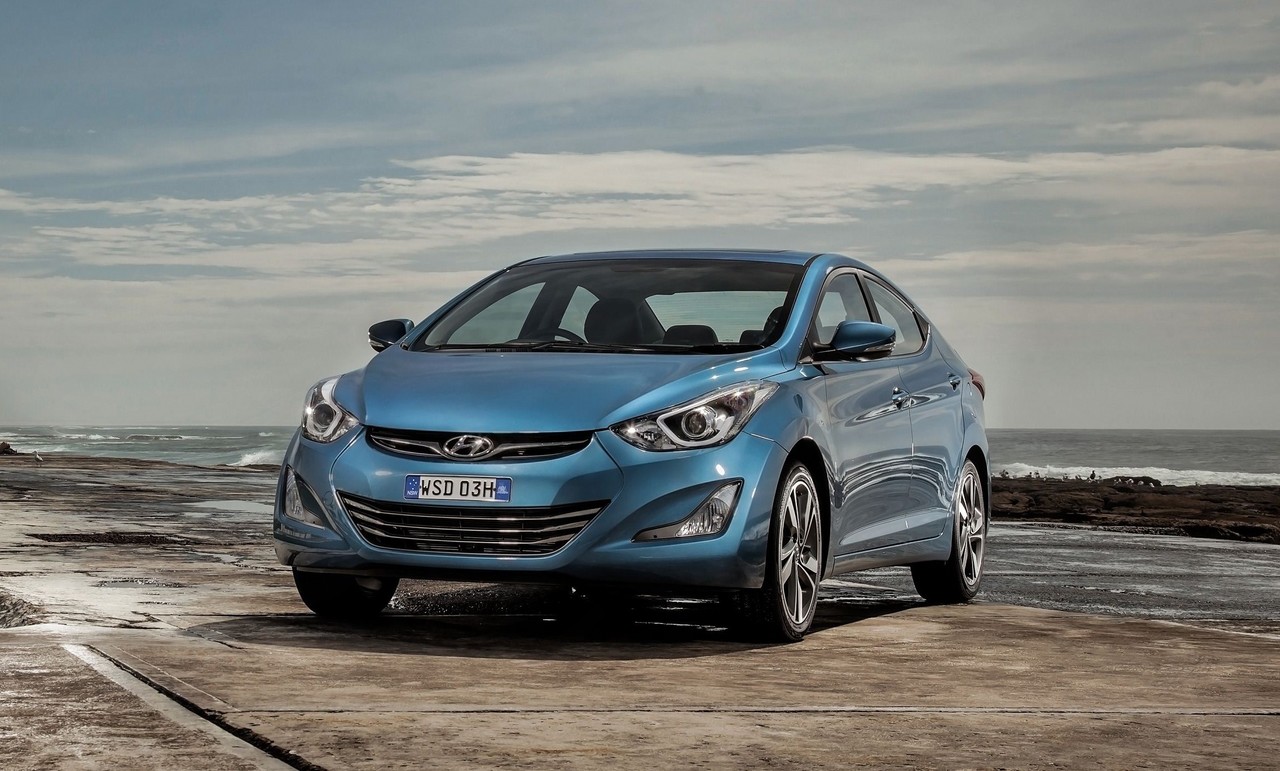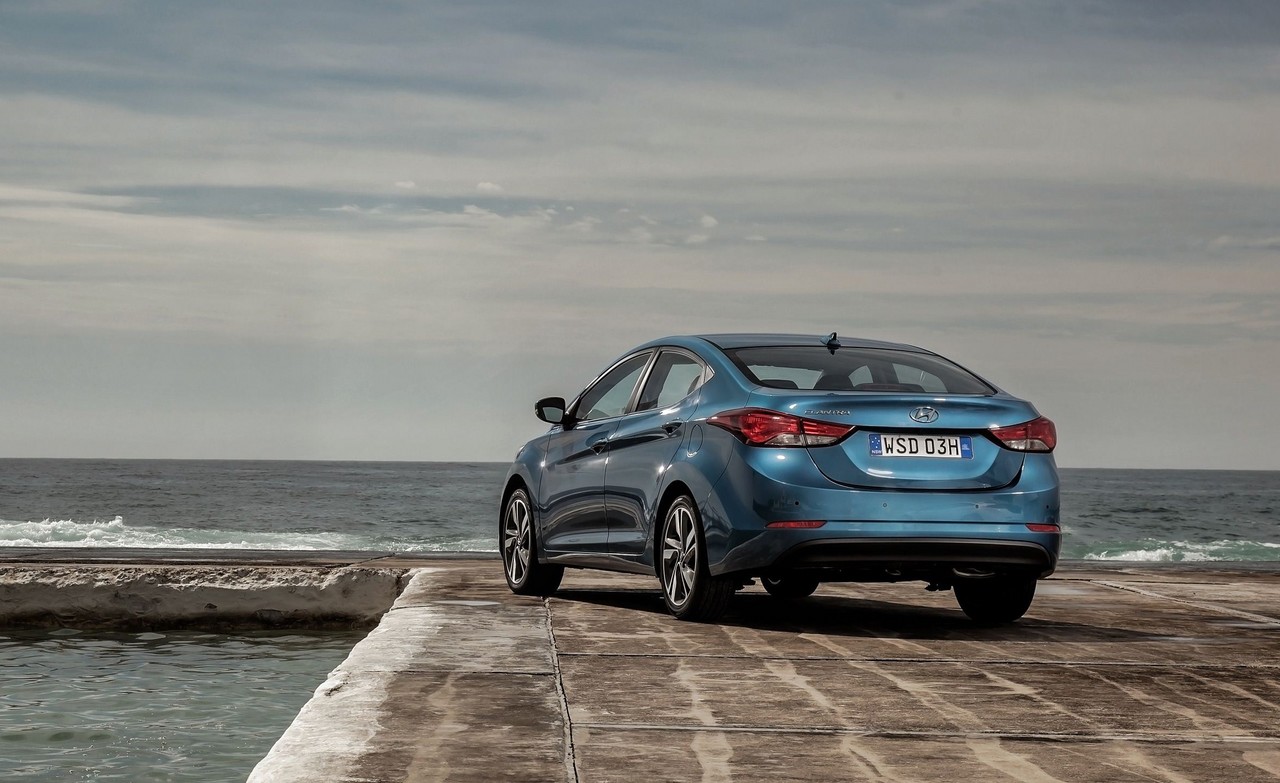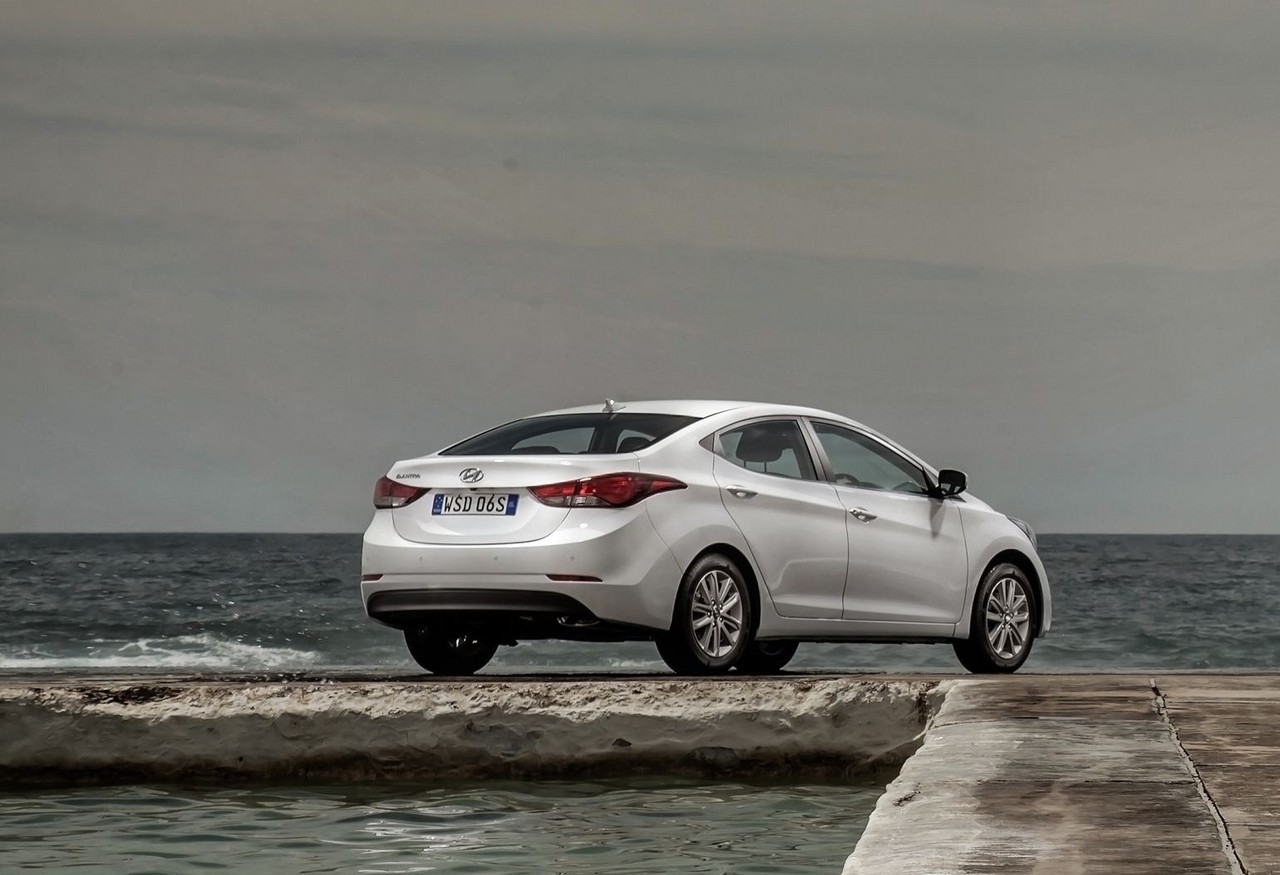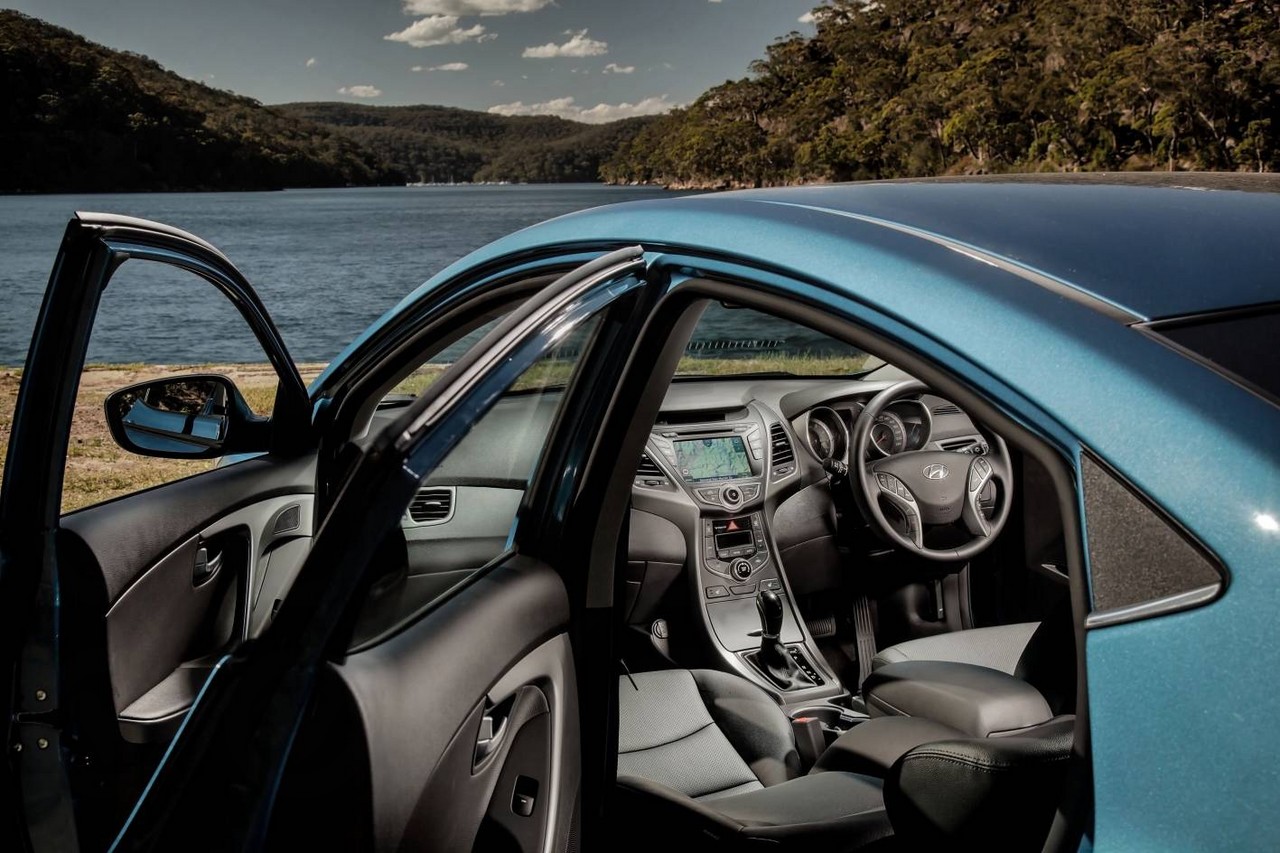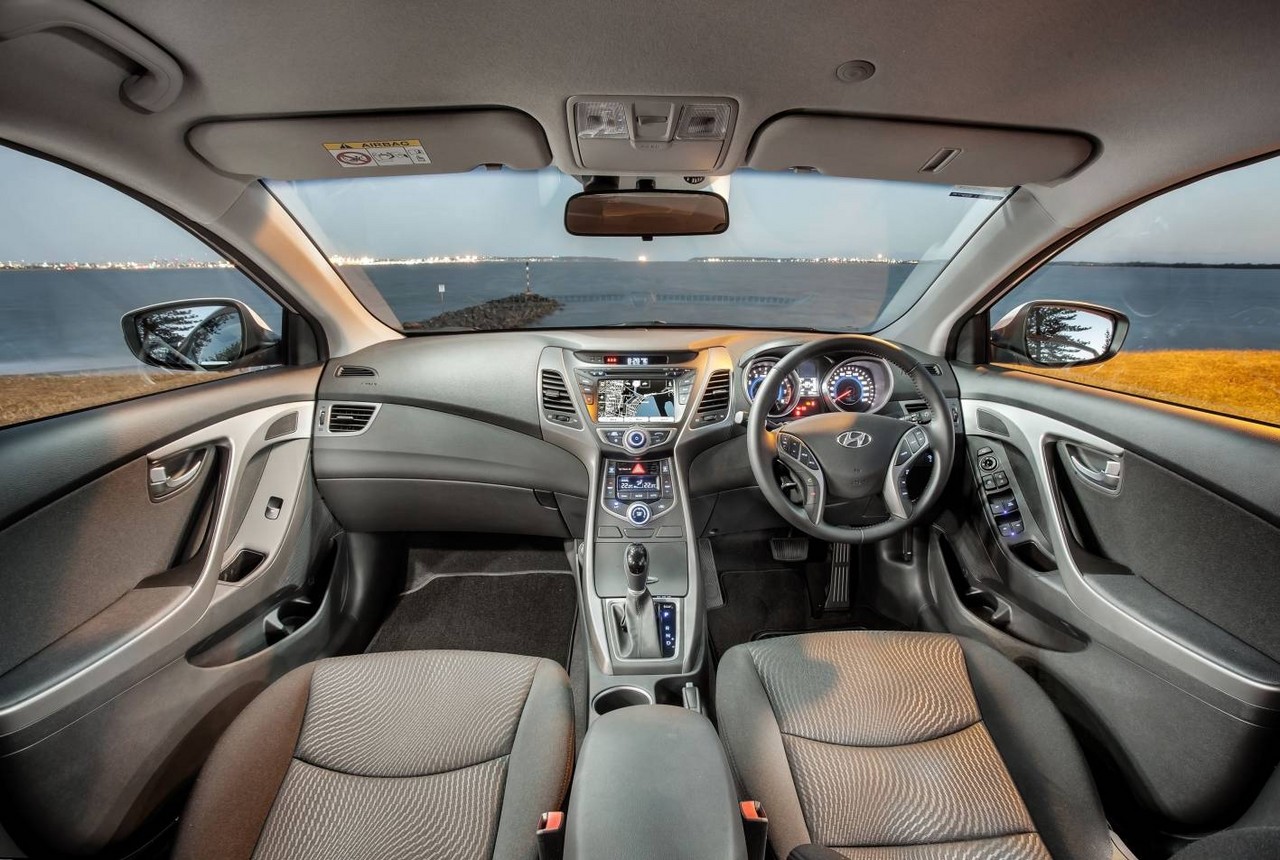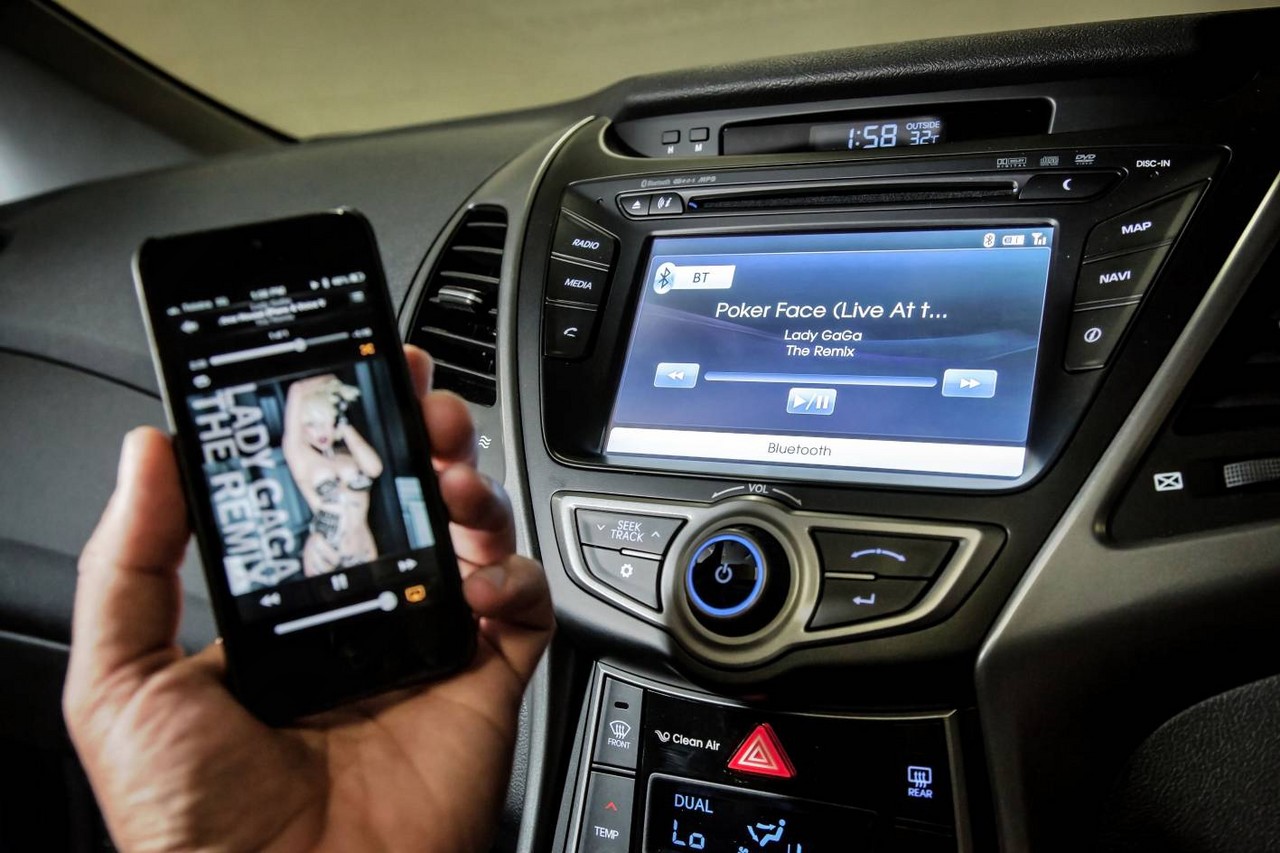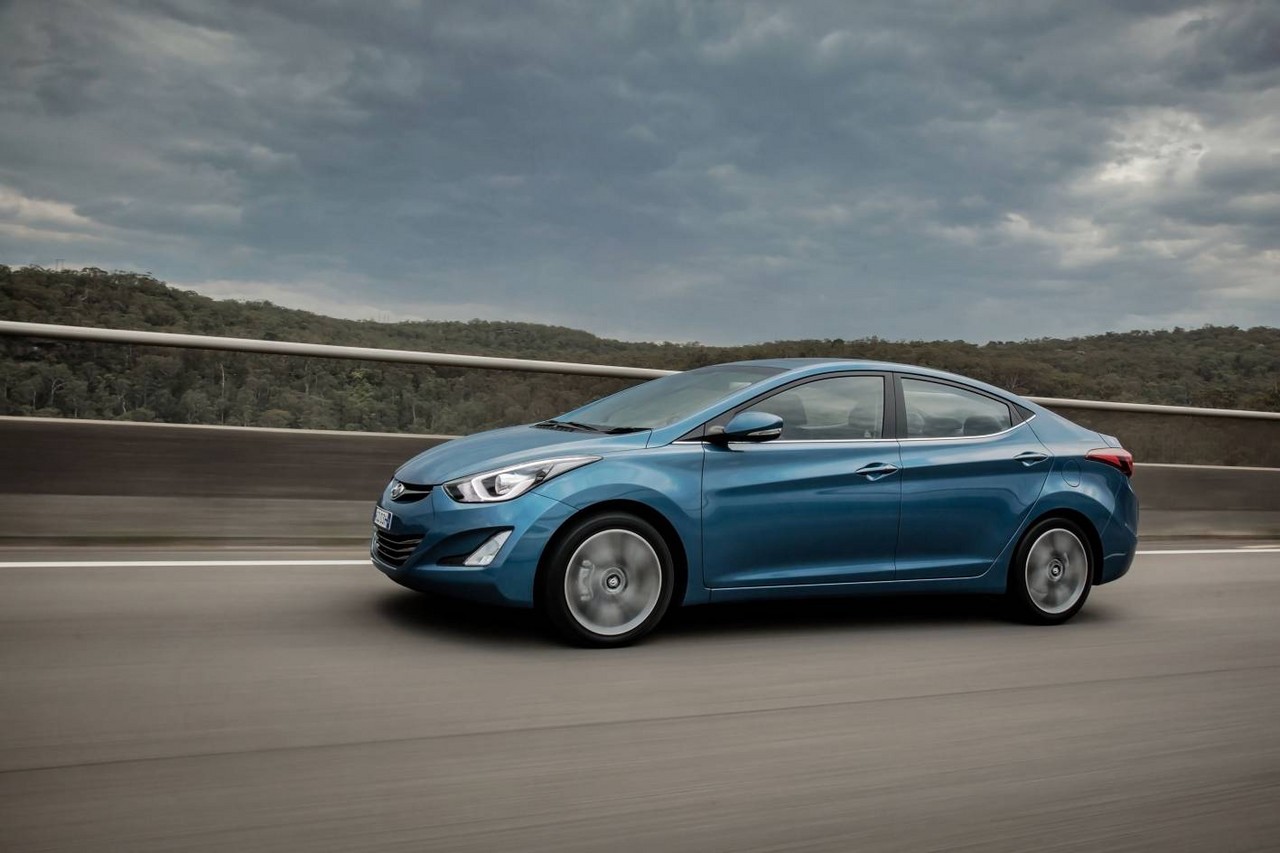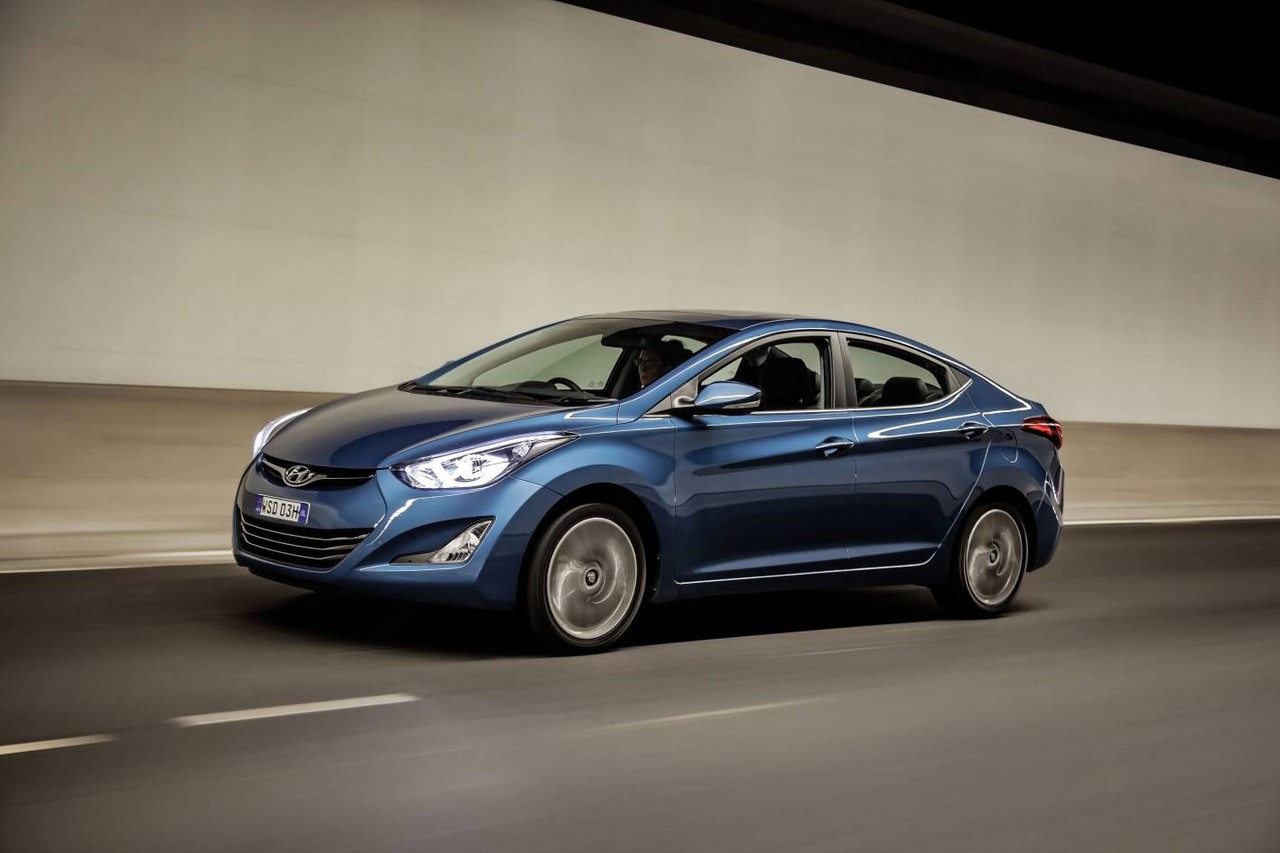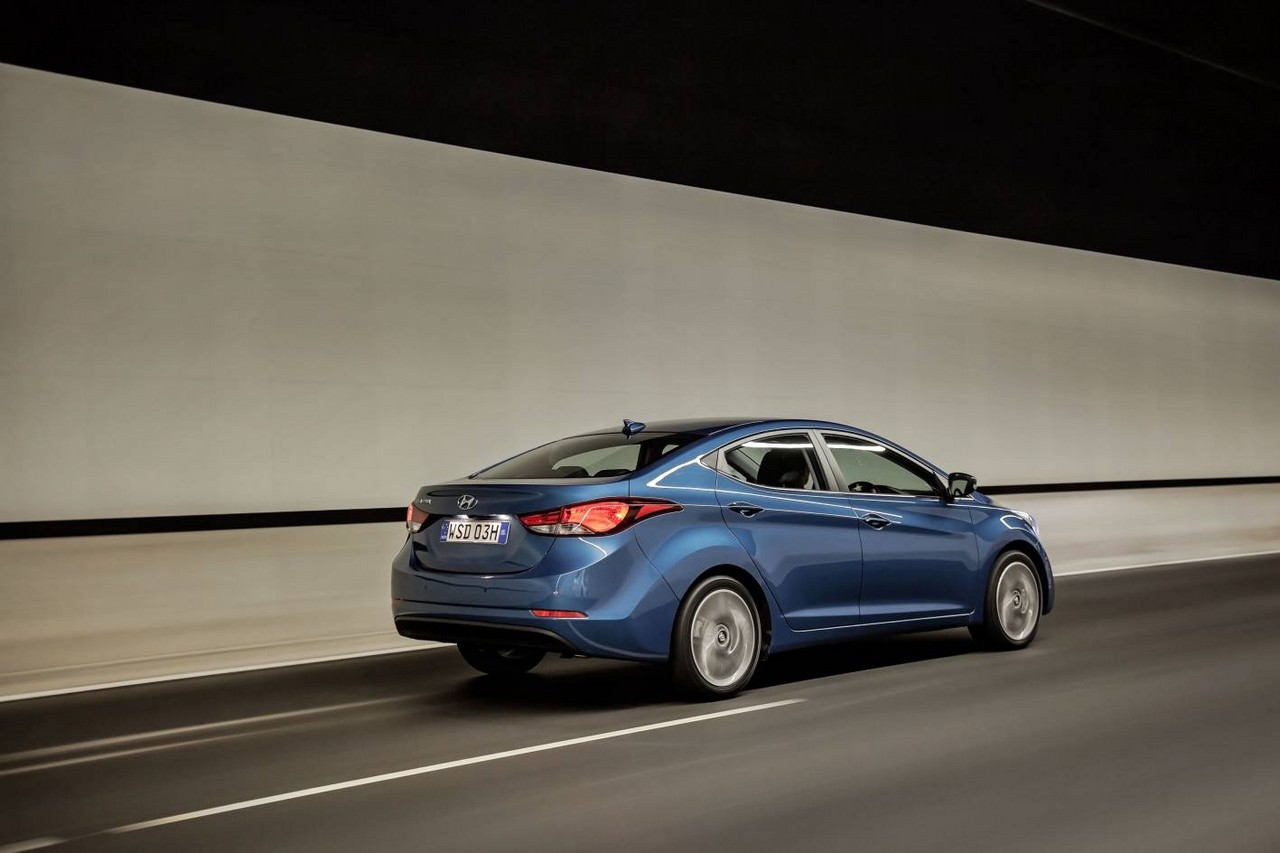
- MD.I Elantra with 15-inch wheels provides a comfortable ride
- MD.II Elantra has better ride/handling balance
- Generally spacious interior…
- … but limited rear seat headroom
- Cabin lacks sound insulation
- Electric steering lacks feel
- Rear seats don’t fold flat
- Thick A-pillars restrict forward visibility
Review: Hyundai MD.I Elantra (2011-13)
Overview
Released in June 2011, the Hyundai MD Series I (MD.I) Elantra was a small, four-door sedan. Manufactured in Ulsan, South Korea, the front-wheel drive Elantra was powered 1.8-litre four-cylinder petrol engines that were mated to either six-speed manual or automatic transmissions. Furthermore, the MD Elantra range consisted of Active, Elite and Premium variants (see table below).
G4NB engine
The 1.8-litre G4NB ‘Nu’ petrol engine had an aluminium block and cylinder head, double overhead camshafts, four valves per cylinder, variable intake and exhaust valve timing (Hyundai’s Dual Continuously Variable Valve timing or D-CVVT), a variable induction system, electronic throttle control and a compression ratio of 10.3:1.
Dimensions and body
Compared to its HD Elantra predecessor, the MD Elantra was 25 mm longer (at 4530 mm) and had a 50 mm longer wheelbase (2700 mm), but was 55 mm lower (1435 mm) and width was unchanged (1775 mm). The new body had a coefficient of drag of 0.28, while the increased use of high-strength steel contributed to a 37 per cent increase in body stiffness and a lower body weight.
Steering and suspension
The MD Elantra had electric power-assisted steering, MacPherson strut front suspension and a torsion beam rear axle.
| Engine | Variants | Trans. | Peak power | Peak torque |
|---|---|---|---|---|
| 1.8-litre petrol I4 | Active | 6sp man., 6sp auto |
110 kW at 6500 rpm | 178 Nm at 4700 rpm |
| Elite, Premium |
6sp auto |
Safety equipment
Standard safety equipment for the MD Elantra included dual front airbags, front side (thorax) airbags, front and rear curtain airbags, ABS, brake assist electronic brake force distribution, electronic stability control, traction control and front seatbelts with pretensioners and load limiters.
ANCAP crash testing
In ANCAP crash testing , the MD Elantra received a five star adult occupant protection rating with a score of 33.21 out of 37. In the offset crash test, there was a slight risk of serious chest injury for the driver and a slight risk of lower leg injury for both front occupants. In the side impact test, the seat-mounted thorax airbag did not deploy as intended and there was a moderate risk of serious chest injury for the driver. Hyundai Australia assessed that the failure of the airbag to deploy as intended was a ‘one off’.
Features
Standard features for the Elantra Active included 15-inch steel wheels (with a full size spare), a six speaker sound system with CD player, with MP3-compatibility and auxiliary inputs (3.5 mm/USB/iPod), air conditioning, cloth seats, cruise control, 60/40 split and folding seats, steering wheel audio and Bluetooth controls, remote central locking, power windows and mirrors, a height and reach adjustable steering wheel, a height adjustable driver’s seat, map lights, a 12 volt power outlet, trip computer, an alarm and immobiliser.
The Elantra Elite was further equipped with 16-inch alloy wheels, dual-zone climate control air conditioning, knit cloth seats, front fog lights, automatic headlights, rain-sensing wipers, rear parking sensors and push button start.
Beyond this, the Elantra Premium added 17-inch alloy wheels, leather/leatherette seats, a reversing camera, a power-operated tilt/slide sunroof and an electrochromatic rear view mirror.
July 2012: Elantra update
In July 2012, the MD Elantra underwent a minor update with the introduction of a new audio system with a five-inch colour touch screen, chrome interior door handles and more aerodynamic windscreen wipers.
Related links
- Press release: Hyundai MD.I Elantra (June 2011)
- Specifications: Hyundai MD.I Elantra (June 2011)
- Brochure: Hyundai MD.I Elantra (December 2012)
Review: Hyundai MD.II Elantra (2013-15)
Overview
Released in October 2013, the Hyundai MD Series II (MD.II) Elantra introduced subtle cosmetic updates, new under-bonnet insulation, and suspension and steering calibrations that were developed specifically for Australia. In addition to sharper steering response, the adoption of Hyundai’s Flex Steer system enabled the driver to select from three modes – Comfort, Normal and Sport – which provided varied levels of assistance.
Visually, the MD.II Elantra could be identified by its new front and rear bumpers, headlights, fog lights and chrome grilles and beltline mouldings. The Elite and Premium variants also received new ten-spoke alloy wheel designs (in 16- and 17-inch sizes, respectively).
| Engine | Variants | Trans. | Peak power | Peak torque |
|---|---|---|---|---|
| 1.8-litre petrol I4 | Active | 6sp man., 6sp auto |
110 kW at 6500 rpm | 178 Nm at 4700 rpm |
| Trophy (2014) | ||||
| Elite, Premium |
6sp auto |
Features
Compared to its MD.I predecessor, standard features for Active variants were extended to include front fog lights, rear parking sensors, a cooled glovebox, cloth door trim inserts and stainless steel scuff plates for the front doors.
Elite variants gained satellite navigation with a seven-inch display and SUNA live traffic updates, a reversing camera, power folding mirrors and an instrument cluster with a 3.5-inch OLED display.
Standard features for the range-topping Premium variants were also extended to include satellite navigation (as per the Elite), xenon headlights with LED positioning lights and rear console air vents.
Elantra Trophy
Released in January 2014, the Elantra Trophy edition was based on the entry-level Active edition but further equipped with 16-inch five double-spoke alloy wheels, leather seat trim and a premium steering wheel and gearshift lever.
2014 Elantra Special Edition
Released in September 2014, the Elantra Special Edition was based on the Active but further equipped with 16-inch alloy wheels, leather appointed seats, premium interior door trim, a premium steering wheel and gear knob.
Brochure
Related links
- Specifications: Hyundai MD.II Elantra (October 2013)
- Press release: Hyundai MD.II Elantra Trophy (January 2014)
- Hyundai Motor Company Australia: Hyundai Elantra
- Wikipedia.org: Hyundai Elantra (fifth generation)
